Insurance adjusters frequently deal with clear-cut damage from factors like hail and wind, but nail pops stand out as a common but often misunderstood problem. Nail pops are not to be confused with “pulled-through fasteners” associated with potential wind damage, and often warrant a closer look. This guide will help you identify nail pops and uncover common causes for more accurate claims assessments.
What is a nail pop?
A nail pop is when a nail becomes partially or mostly backed out of its original penetration on a roofing system, either causing a hump in a shingle or wearing a hole through a shingle. It starts with a nail backing out and pushing upward against the underside of a shingle rather than holding it down against the roofing surface. If left unattended, nail pops will continue to apply pressure to a shingle from beneath and eventually wear a hole through the shingle, leaving an entry point for water intrusion to occur. Nail pops are not just limited to roofing nails, framing nails used for attaching the sheathing to structural framing, can also back out of place and protrude through roofing materials. Other types of roofing materials can experience similar phenomena such as screws backing out on a metal roofing system.
Common causes of nail pops
The overwhelming driving force behind nail pops is the constant expansion and contraction of materials due to hot/cold cycles from day to night and season to season. Ventilation is the most important factor in preventing nail pops, properly regulating the temperature of an attic space/roof significantly reduces the likelihood of occurrence. Nail pops are a common yet potentially tricky roof issue and can have multiple exacerbating factors.
Improper installation
When installing a roof, nails should firmly anchor the shingles in place to effectively shed water from the roof while not allowing water intrusion. A post-construction quality audit can help to pinpoint any installation issues that might lead to nail pops, such as:
- Incorrect nailing
- Using the wrong nails
- Poor attic ventilation
If a nail is crooked or not flush against the surface of the shingle, it doesn’t form a good seal and may allow long-term leakage and seepage. Nails that are either too short or have a smooth shank may not grip the sheathing securely, paving the way for possible nail pops. Additionally, inadequate or inappropriate attic ventilation can trap heat and humidity, causing the sheathing/rafters to swell and push up loose or smooth nails. Regulating the temperature of an attic space/roof is the best way to reduce the risk of nail pops.
Weather damage
While nail pops (nails protruding through shingles) are not the direct result of storm activity (wearing a hole through the shingle occurs over long periods), storm activity can lift/shift roofing assemblies which can increase the likelihood of nail pops happening. Roofing systems need regular maintenance just like any other part of a structure, any shingles that appear slightly raised/elevated should be addressed before the nail wears through the shingle.
Rust or corrosion
Roofing nails are made from steel, a material known for its susceptibility to rust. Even with galvanized steel nails, the rust-proof coating can wear away over time. Rust build-up can weaken the nail’s hold on the sheathing, making them loose and more susceptible to backing out of the original penetration.
Aging roofing materials
Compromised roofing materials set the stage for potential nail pops. Aged, warped, previously damaged/repaired roofing assemblies can also set the stage for nail pops to occur and/or increase the frequency of occurrence. When the sheathing underneath becomes damaged, the nails no longer have a secure anchor to grip. This is one of many reasons that a solid nailable surface is written into building codes.
Nail pops on a roof aren’t a named peril
A nail pop can be a subtle but pivotal part of a roof inspection. Identifying it as potential leak threat is vital to a precise and fair claim assessment. For instance, blistering and hail damage can cause roofing trouble, but consider a scenario where you observe water staining on a ceiling and can trace the roof leak back to a nail pop. Because it’s not the direct result of a policy named peril such as wind/hail/fire, insurance policies typically will not cover damages stemming from nail pops alone.
Here’s a look at a nail pop protruding through a shingle, which may be a leak source and indicates the overall health of the roofing system.
Next steps for adjusters
When considering nail pops, it’s imperative to understand that they are a common issue observed on asphalt composition shingle roofs, especially on aging roofs. It’s also critical to understand that corrective measures can be taken to ensure your roof is properly protecting your home, without having to replace an entire roofing system due to a few nail pops. While our main function during an inspection is to identify and quantify peril-related damage for adjusters, it’s also of the utmost importance that we also identify vulnerabilities and/or deficiencies in the roofing assembly. Misidentifying damage or anomalies can lead to inaccurate claims assessments and potential disputes between policyholders and adjusters.
Knight’s Solutions is here to help. Our technicians are ready to assist you, providing detailed photo reports that pinpoint whether damages are storm-related or stem from issues like nail pops. We’re not just observers; we’re partners in ensuring that each inspection is as accurate as possible. Schedule your next inspection with Knight’s Solutions today.
Knight’s Solutions technicians conduct inspections and provide emergency services, guided by the acting adjuster. Our HAAG-certified professionals utilize technology to provide thorough documentation, offering advisory support to insurance adjusters. Operating independently of insurance companies, our non-binding assessments provide an impartial perspective, assisting in informed decisions on potential damage. Not licensed claims adjusters, we acknowledge the final decision rests with the insurance company and designated adjuster regarding the validity of our documentation and claim settlements.

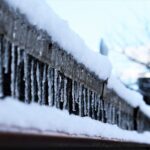
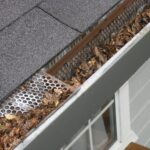
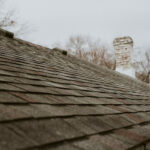




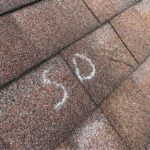
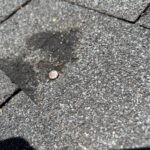
Recent Comments